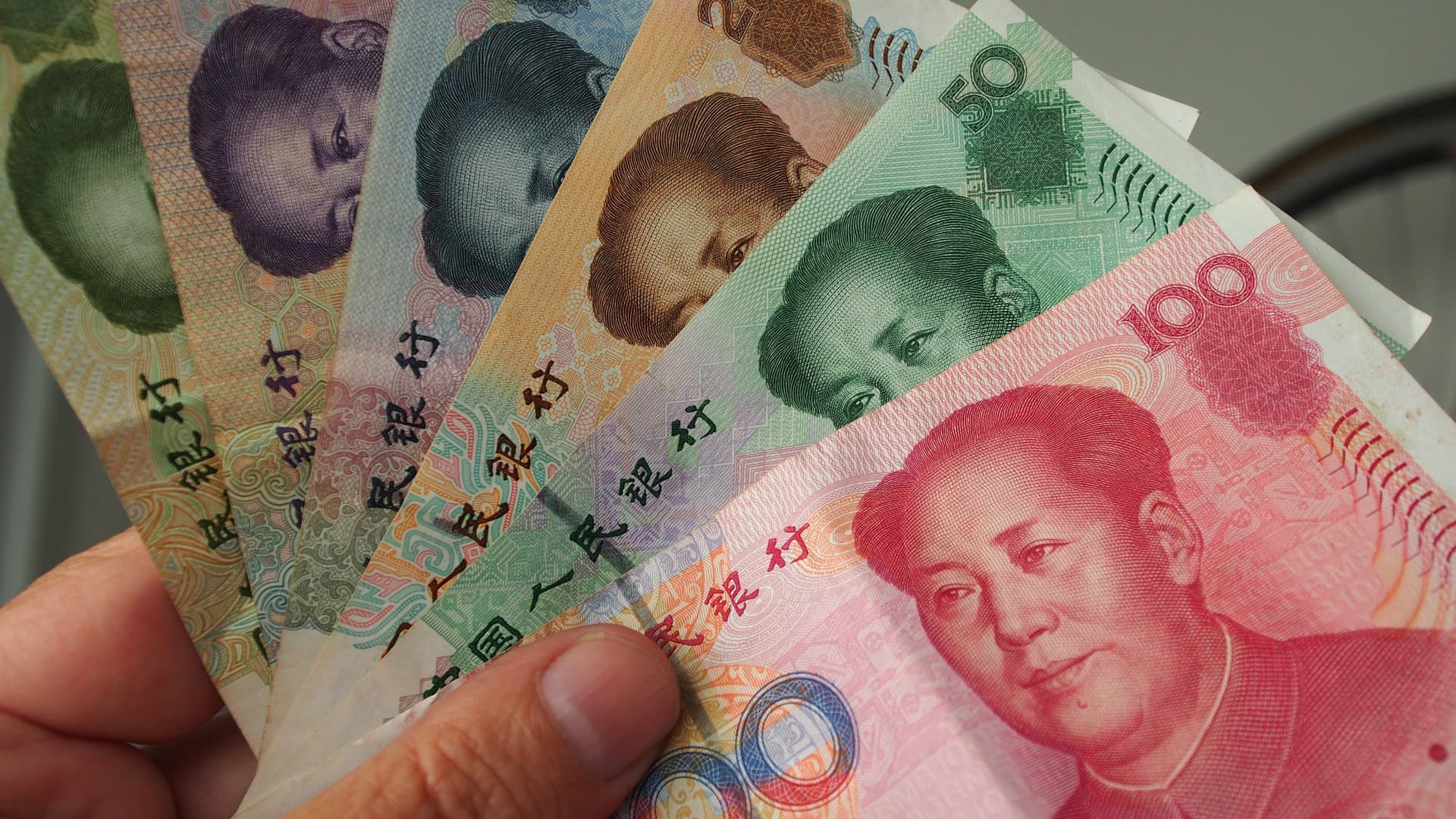Products You May Like
BEIJING — The Chinese yuan strengthened slightly against the U.S. dollar on Wednesday, reversing a sharp weakening trend after the People’s Bank of China signaled support for its currency.
The yuan has tumbled by about 3% this month as the U.S. dollar strengthened, according to Wind Information. Prolonged Covid controls and worries about Chinese economic growth have also weakened sentiment on the yuan.
On Monday, the PBOC announced it would cut the deposits by 1 percentage point to 8%, effective May 15. The move reduces the amount of foreign currency that banks need to hold, theoretically reducing the amount of weakening pressure on the yuan.
“This move serves as a strong policy signal [the] PBOC is getting uncomfortable with the rapid depreciation of the currency,” Goldman Sachs analyst Maggie Wei and a team said in a report Monday.
The analysts pointed out that last year, the Chinese central bank increased the same foreign currency reserve ratio twice to slow rapid strengthening in the yuan.
Uncertainties are still high with Shanghai facing protracted lockdown and new local Covid cases rising in Beijing.Goldman Sachs analysts
“Looking forward, we expect this RRR cut to slow down CNY depreciation in the near term, though it would also depend on the broad USD path and overall sentiment toward Chinese growth,” the analysts said. “Uncertainties are still high with Shanghai facing protracted lockdown and new local Covid cases rising in Beijing.”
On Wednesday, the PBOC set the yuan midpoint at 6.5598 versus the dollar, the weakest fix since April 2021, according to FactSet data.
The U.S. dollar has strengthened since the Federal Reserve embarked on a cycle of monetary policy tightening and interest rates hikes. The U.S. 10-year Treasury yield has climbed to over three-year highs, erasing a premium the Chinese 10-year government bond yield once held.
The Fed-related market moves have made U.S. dollar-denominated assets relatively attractive to investors, while there’s general unease about the stance of economic policy in China, Schelling Xie, senior analyst at Stansberry China, said Tuesday. He expects the yuan to be on a weakening trajectory, but said the pace will likely slow.
The Chinese yuan is traded onshore — on the mainland — and offshore, primarily in Hong Kong. The yuan can trade within a 2% range above or below a midpoint set daily by the PBOC based on recent market action.
The offshore-traded yuan topped a psychologically key level of 6.60 yuan versus the dollar late Monday —the weakest since the fall of 2020, according to Wind data.
As of Wednesday afternoon, the offshore yuan held slightly stronger, near 6.58 versus the greenback. The onshore yuan was near 6.55 yuan versus the U.S. dollar.
Morgan Stanley economists expect the onshore yuan to trade near 6.48 against the U.S. dollar by the end of June.
“Overall, we believe that the PBOC would tolerate some orderly weakness in CNY, as long as it is driven by the fundamentals,” the bank’s emerging markets strategists said in a report Monday. “But USD/CNY could overshoot [the target] in the short term given the market volatility.”
Weak market sentiment
Mainland China’s primary Shanghai and Shenzhen stock indexes plunged Monday in their worst day since Feb. 3, 2020 — in the early days of the pandemic’s initial shock.
The capital city of Beijing began mass testing in the main business district on Monday, and ordered people in a smaller hard-hit area to stay home.
Shanghai, China’s largest city, has remained under prolonged lockdown for about a month with no clear end date in sight.
Despite a better-than-expected first quarter GDP report last week, several investment banks cut their forecast for China’s full-year GDP in light of the latest virus outbreaks and Covid controls.
Policymakers have expressed support for growth in recent weeks, but markets remained more pessimistic.
“China’s policy response has been mild and geared towards fiscal front-loading,” Citi analysts said in a report late last week. “The authorities are clearly not resorting to old pump-priming ways of unleashing indiscriminate leverage to stimulate the economy.”
Separate from the forex deposit reserve cut, the central bank also cut the overall reserve requirement ratio — the amount of cash banks need to hold – on Monday. But the 25 basis point reduction was below many analysts’ expectations.
Premier Li Keqiang said Monday at a meeting of the State Council, the top executive body, that the government must attach great importance to the economic impact from unexpected domestic and foreign situations.
The PBOC said Tuesday it was aware of recent financial market volatility and would increase support for the economy with prudent monetary policy. But the announcement did not boost market sentiment much.
Mainland China stocks were higher on Wednesday, after a volatile day of trade a day earlier, which saw the main indexes close lower.
